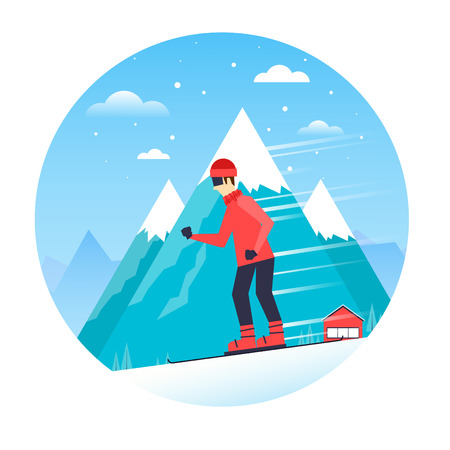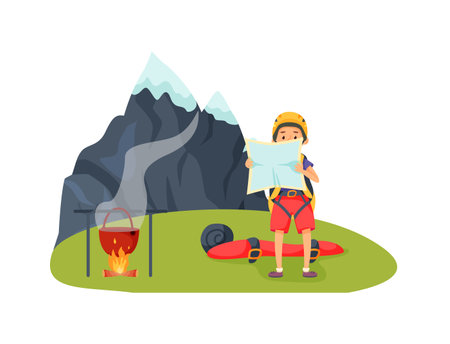1. Setting the Scene: Winter in India
India’s winter isn’t just a dip in temperature—it’s a vibrant, sensory adventure waiting to unfold. From the majestic, snow-laden peaks of Himachal Pradesh and Uttarakhand in the north to the mist-wrapped coffee hills of Coorg and Munnar down south, Indian winters reveal an incredible spectrum of landscapes and experiences. Imagine waking up to the Himalayan sunrise, your breath turning into wisps as you sip on piping hot chai, or feeling the cool, crisp air swirl around ancient temples and bustling bazaars. For Indian women seeking adventure, this season brings a unique blend of challenge and charm—where desi traditions meet the thrill of exploration. Whether you’re dreaming of trekking through Kashmir’s powdery slopes, camping by Rajasthan’s golden dunes under starlit skies, or chasing waterfalls that tumble through foggy Western Ghats, winter in India offers a canvas as diverse as its culture. The adventure begins here—with every gust of winter wind whispering stories of courage, opportunity, and inspiration tailored for women who dare to explore.
2. Unique Challenges for Indian Women Travellers
Embarking on a winter adventure in India as a woman brings its own set of challenges, shaped by cultural expectations, safety considerations, and the country’s diverse climates. For many Indian women, venturing into the great outdoors or planning solo trips during the colder months is both empowering and daunting.
Societal Expectations and Family Norms
In many parts of India, traditional family roles still influence travel decisions. Women are often expected to prioritize household responsibilities, and extended travel—especially for leisure or adventure—can be met with skepticism or disapproval from elders. Overcoming these societal barriers requires confidence, negotiation skills, and sometimes the support of like-minded friends or communities.
Safety Concerns on the Road
Safety is a top priority for Indian women travellers. Concerns range from harassment in public spaces to the lack of women-friendly accommodations in remote areas. While popular tourist destinations may offer better infrastructure, lesser-known adventure spots can pose additional risks. Vigilance, careful planning, and reliance on trusted local contacts are essential strategies for ensuring a secure journey.
Common Safety Challenges and Solutions
| Challenge | Practical Solutions |
|---|---|
| Lack of female-only dorms/hotels | Book through trusted platforms; look for womens hostels or homestays |
| Harassment in transit | Travel during daylight; use women-only compartments when available; share location with family/friends |
| Poor network connectivity in remote regions | Inform someone about your itinerary; carry emergency contact devices |
Tackling Unpredictable Weather Conditions
India’s winters vary dramatically—from chilly winds in Ladakh to damp cold in the Northeast and unpredictable rains in the Western Ghats. Women travellers must prepare for shifting weather by packing versatile clothing layers and weatherproof gear while considering modesty norms prevalent in certain regions.
Packing Essentials for Indian Winter Adventures
| Item | Reason |
|---|---|
| Thermal innerwear | Keeps warm without adding bulk; aligns with modesty requirements |
| Waterproof outerwear | Essential for sudden rain or snow showers across northern and eastern India |
| Multipurpose scarf or stole | Provides warmth; doubles as headcover for cultural sensitivity in rural/temple visits |
Navigating these unique hurdles calls for resilience and resourcefulness, but each challenge overcome adds to the sense of accomplishment. As more Indian women embrace winter adventures, their stories continue to inspire others to push boundaries—one snowy trail at a time.

3. Crucial Gear and Desi Jugaad Hacks
Layering the Indian Way: Phirans, Shawls, and More
When it comes to braving the Indian winter—whether you’re trekking through Himachal’s snow-laden trails or camping in the misty hills of Uttarakhand—layering is your best friend. Many women swear by the traditional Kashmiri phiran: an oversized woolen tunic that traps warmth while letting you move freely. Pair it with a chunky shawl from Lajpat Nagar or a colourful Himachali cap for both style and practicality. Don’t forget to wear a light cotton layer underneath; it absorbs sweat and keeps chills at bay.
Budget-Friendly Thermals: Where to Shop Smart
You don’t have to break the bank for good thermals. Delhi’s Sarojini Nagar market is a goldmine for affordable, surprisingly warm base layers—just remember to bargain! If you want branded options, Decathlon has reliable thermals that hold up even in sub-zero conditions, and they often run discounts during winter months. For socks, opt for thick, locally made woollen ones found at any hill station bazaar; your toes will thank you!
Desi Jugaad: Hacks Only Locals Know
No one does jugaad like we do. In extreme cold, slip newspaper sheets inside your shoes for instant insulation—a trick borrowed from Himalayan porters. Carry a hot water bag (easily bought at any chemist) for warmth at night. And when in doubt, layer with multiple dupattas or use your mom’s old saree petticoat as an extra skirt under pants. For gloves, if you can’t find technical gear, grab cheap knitted mittens from street stalls and double-layer them.
Don’t Forget These Essentials!
Packing a sturdy rain poncho (monsoon-style) helps if you get caught in unexpected winter drizzles. Sunglasses are crucial too—snow glare is real in North India! Finally, always stash a small pouch of moov or balm; sore muscles and minor injuries are part of every adventure, but with these desi fixes and smart gear choices, nothing can stop you from conquering the cold.
4. Inspiring Indian Women Trailblazers
India’s winter adventure scene sparkles with the achievements of incredible desi women who have broken stereotypes and rewritten history. Their journeys not only inspire, but also empower the next generation of female trekkers to conquer Himalayan snow and sub-zero challenges.
Legends Who Paved the Way
The most iconic name is Bachendri Pal, the first Indian woman to summit Mount Everest in 1984. Her legendary ascent inspired countless others, showing that Indian women could scale not just mountains, but societal expectations too. Her subsequent expeditions—including leading all-women teams across the Himalayas—proved that winter adventure in India was no longer a men’s domain.
Everyday Sheroes from Every Corner
Beyond legends, ordinary Indian women are rewriting what’s possible on icy trails:
| Name | Region | Achievement |
|---|---|---|
| Ankita Sood | Himachal Pradesh | Completed solo Chadar Trek at -20°C, inspiring local girls |
| Priya Darshini | Mumbai/Tamil Nadu | First South Indian woman to finish Ladakh Frozen River trek; now runs winter trek workshops for women |
| Saira Bano | Kashmir Valley | Pioneered women-led snow camping groups in Gulmarg region |
| Megha Sharma | Delhi/North East | Trek leader introducing urban working women to Northeast winter adventures |
Breaking Barriers & Building Communities
These trailblazers face unique desi challenges—from family concerns about “ladkiyan akeli kaise jayengi” (how can girls travel alone), to dealing with the lack of women-specific gear in local bazaars. Yet, their resilience has created new support networks: WhatsApp trekking groups, city-based adventure clubs for women, and online mentorship circles where seasoned trekkers guide newbies on everything from thermal layering to hostel safety tips.
A Ripple Effect of Inspiration
The stories of these Indian women prove that courage isn’t just found at the summit—it’s forged in every snowy step, each shared chai at a base camp, and every “you can do it!” exchanged on frozen trails. Their journeys light up a path for more Bharatiya betis to dream bigger and blaze their own trails through India’s winter wilds.
5. Opportunities for Sisterhood and Self-Discovery
Embarking on a winter adventure in India is not just about conquering snow-clad peaks or braving icy winds—it’s a journey towards samuhikta, or community, that resonates deeply within Indian culture. When women from different backgrounds come together on Himalayan treks or desert safaris in Rajasthan, the shared experiences create bonds stronger than the chill of the season. The laughter around a campfire, sharing chai after a long trek, or supporting each other during difficult climbs fosters an unspoken sisterhood. These expeditions become safe spaces where Indian women can shed societal expectations and embrace their authentic selves.
Samuhikta: Building Community Through Adventure
In the heart of winter’s challenges, teamwork becomes essential. Whether it’s setting up tents in sub-zero temperatures or navigating snowy trails, every moment calls for collaboration. Indian traditions often emphasise collective strength—here, this spirit is amplified as women uplift each other through acts of kindness, encouragement, and shared responsibilities. The sense of belonging that emerges is reminiscent of the Indian joint family system, but reimagined in the wild.
Confidence Born from Overcoming Challenges
For many Indian women, venturing into the great outdoors during winter is a bold step. Facing unpredictable weather and physical obstacles instils resilience and self-belief. Each accomplishment—be it crossing a frozen river or completing a high-altitude trek—translates into newfound confidence back home. These victories are celebrated together, reinforcing the idea that when one woman rises, the entire group is elevated.
Lifelong Friendships and Lasting Inspiration
The friendships forged amidst snowstorms and starlit nights last far beyond the adventure itself. WhatsApp groups stay active with memories, reunion plans, and support networks. Many participants return as mentors for new trekkers, inspiring the next generation of adventurers. In a country where female camaraderie often flourishes within four walls, winter expeditions expand those boundaries to the vast landscapes of India—reminding women that their journeys are both personal and collective.
6. Safety, Health & ‘Swad Anusar’ Nutrition
Prioritising Safety in India’s Diverse Terrains
Embarking on a winter adventure in India as a woman calls for extra mindfulness when it comes to safety. Whether you’re trekking the Himalayan foothills or wandering through Rajasthan’s frosty deserts, always inform someone about your itinerary, keep emergency contacts handy, and trust your instincts. Many Indian women prefer travelling in small groups or joining local all-women expeditions, which not only enhance security but also create a supportive environment. Don’t forget to download essential apps like ‘112 India’ for emergencies and use public transport wisely, especially after sunset.
Staying Healthy in Chilly Climates
India’s winter is a patchwork of climates—bone-chilling up north, crisp in the west, and mild elsewhere. Layering up with thermal inners, woollen scarves (dupatta style!), and waterproof shoes will keep you cosy and agile. Carry a basic medical kit: paracetamol, ORS sachets, band-aids, and personal hygiene products are must-haves. Hydration is crucial even in cold weather; indulge in hot masala chai at roadside dhabas to warm up and bond with locals—a quintessentially Indian wellness ritual!
‘Swad Anusar’: Nourishing Your Adventure the Indian Way
Indian winters are synonymous with hearty, soul-satisfying food. Embrace local nutrition that keeps you energised: start mornings with piping-hot poha or upma, snack on roasted peanuts during hikes, and don’t miss the ghee-laden parathas at mountain homestays. “Swad anusar”—to your taste—is key; adjust spice levels as per your comfort. For quick energy boosts, carry jaggery-chikki bars or dry fruits from local markets. Vegetarians rejoice—India’s regional cuisines offer endless plant-based choices without compromising on taste or calories!
Smart Food Habits for Adventurous Women
While exploring, opt for freshly cooked meals over packaged snacks to avoid tummy troubles. Trust bustling eateries frequented by locals—their turnover ensures freshness. If you have dietary restrictions, learn simple Hindi phrases (“Bina mirch ka khana chahiye”—food without chilli) or ask hosts for home-style cooking. Sipping on herbal kadha or tulsi tea helps boost immunity against seasonal colds.
Inspiration from Everyday Experiences
Every chai break becomes a memory; every shared meal strengthens bonds with fellow travellers and locals alike. By blending Indian culinary wisdom with practical safety and health tips, women can craft winter adventures that are both thrilling and nourishing—body and soul.
7. Planning Your Own Winter Yatra
Step-by-Step Guide for Desi Women Adventurers
Ready to embark on your own winter yatra? Here’s a tailored roadmap for Indian women who want to experience the magic of winter adventures across our diverse country. From the Himalayas to the Western Ghats, the Indian winter offers endless possibilities—if you plan it right!
Step 1: Choosing the Perfect Route
Start by deciding what kind of experience you’re after. Do you crave snow-capped peaks in Himachal Pradesh, serene lakes in Kashmir, or misty trails in the Nilgiris? Check weather updates and local advisories—remember, winters can be unpredictable! Prioritize routes popular among women trekkers such as Kedarkantha, Triund, or Tawang, where safety and infrastructure are better established.
Step 2: Forming a Trustworthy Group
Find like-minded women adventurers through platforms like Girls Who Trek, Facebook groups, or local WhatsApp communities. Always connect with women who share your vibe and ensure everyone is comfortable with the itinerary and pace. If possible, rope in an experienced female guide or join all-women adventure groups—this adds a layer of safety and camaraderie that is truly desi.
Step 3: Gearing Up—Desi Style
Invest in warm layers (thermal inners, windproof jackets), sturdy boots, and locally sourced snacks like chikki and peanuts for energy on the go. Pack traditional remedies like ajwain for digestion and chai masala for warmth. Don’t forget power banks and emergency contacts—network coverage can be patchy in remote areas!
Step 4: Making the Most of Your Yatra
Embrace every moment—from sipping hot chai at a roadside dhaba to waking up to Himalayan sunrises. Engage with locals, try regional foods, and respect local customs. Share your journey on social media using hashtags like #DesiWinterAdventure to inspire other women.
Pro Tip: Safety First
Register with local authorities wherever required and keep your family informed about your location. Use tracking apps and always have a backup plan. Trust your instincts—if something doesn’t feel right, speak up.
Your winter yatra in India can be as adventurous or as soulful as you wish. With careful planning and true desi spirit, you’ll not only conquer snowy trails but also break stereotypes—one step at a time!


